Disclosure: This article contains affiliate links. We may earn a commission from purchases at no extra cost to you, which helps our travel content.
The morning mist still clung to the Mekong River as I sat cross-legged on my guesthouse balcony, watching the town of Luang Prabang slowly stir to life. Saffron-robed monks moved silently through narrow streets, collecting their daily alms against a backdrop of French colonial architecture and gilded temple roofs. This wasn't my first solo adventure in Southeast Asia, but something about this ancient Laotian town—a UNESCO World Heritage site nestled at the confluence of the Mekong and Nam Khan rivers—felt different. Perhaps it was the deliberate pace of life here, where time seems to flow as unhurriedly as the mighty Mekong itself. Or maybe it was the seamless blend of natural beauty, living traditions, and architectural splendor that makes Luang Prabang an ideal destination for the contemplative solo traveler. What I discovered over my week in this spiritual heart of Laos was exactly what I needed: a journey that nourished both my designer's eye and my travel-weary soul.
Arriving: First Impressions and Finding Your Bearings
After the chaotic energy of Bangkok, stepping off the small propeller plane onto Luang Prabang's tarmac felt like entering another dimension entirely. The airport—little more than a single-story building surrounded by mountains—sets the tone for what awaits in this UNESCO-protected town.
I'd arranged a pickup through my guesthouse (a practice I highly recommend for solo female travelers arriving after dark), but during daylight hours, the shared tuk-tuk into town costs about 50,000 kip ($5) and offers your first glimpse of rural Laotian life. The ride takes you past rice paddies, simple wooden homes on stilts, and eventually into the peninsula that forms the heart of old Luang Prabang.
My home for the week was a family-run guesthouse on a quiet lane near Wat Xieng Thong. At $25 per night, my simple but spotless room featured hand-carved wooden details, a ceiling fan that whispered rather than roared, and a small balcony overlooking a garden of frangipani trees. What it lacked in luxury, it made up for in authentic charm and location.
Luang Prabang's manageable size makes it ideal for solo exploration. The main peninsula measures just 1 kilometer by 250 meters, with most guesthouses, cafés, and temples within easy walking distance. I spent my first afternoon simply wandering—letting my designer's eye absorb the harmonious blend of traditional Lao wooden houses, French colonial buildings, and ornate Buddhist temples that gives this town its unique architectural signature.
As the afternoon heat intensified, I retreated to Saffron Coffee, where locally-grown beans are roasted on-site. From their riverside terrace, I plotted my week's adventures while watching long-tail boats navigate the chocolate-brown waters of the Mekong below.
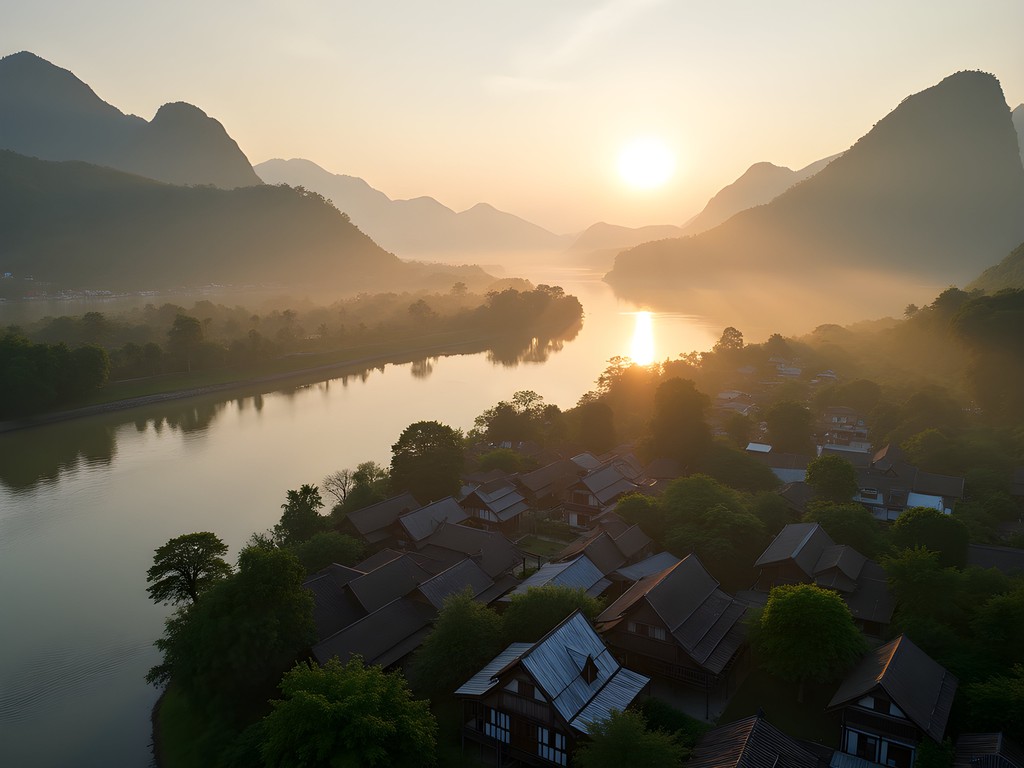
💡 Pro Tips
- Request an airport pickup from your accommodation if arriving after dark
- Stay within the UNESCO heritage zone for easiest access to main attractions
- Exchange money at the airport or official banks in town—rates at small exchange booths can be poor
Morning Rituals: Almsgiving and Markets
"If you want to understand Luang Prabang, you must witness tak bat," my guesthouse host Khamla advised on my first evening. "But please—watch with respect, not as a tourist attraction."
Taking his words to heart, I rose before dawn the next morning, slipping out into streets still wrapped in darkness. I positioned myself on a quiet corner away from the main tourist areas, sitting silently on a low stool provided by a local vendor who sold sticky rice bundles to devotees. As the first light broke over Mount Phousi, the silence was punctuated only by the soft padding of bare feet as hundreds of monks emerged from their monasteries in a solemn procession of saffron and gold.
The almsgiving ceremony—tak bat—has occurred daily for centuries, yet watching local people kneel to offer handfuls of sticky rice to the passing monks never feels like a performance. It's a genuine, living tradition that connects the spiritual and secular communities. I observed respectfully from a distance, without flash photography or interruption, grateful to witness this beautiful communion between the townspeople and their spiritual guardians.
As the monks returned to their temples, I followed the growing stream of locals heading to the morning market. Unlike the night market (which caters primarily to tourists), the morning market pulses with authentic local life. Women from surrounding hill tribes spread their goods on blankets—mounds of chili peppers in impossible shades of red, bundles of fresh herbs I couldn't name, fish still twitching from the Mekong, and crickets and other insects considered local delicacies.
I wandered through with my travel water bottle—an essential companion that lets me fill up anywhere without worrying about plastic waste or stomach troubles. The market offered a photographer's paradise of colors, textures, and faces, but I was careful to ask permission before capturing images, often purchasing small items from vendors whose portraits I hoped to take.
By 8am, with the day's heat already building, I retreated to Joma Bakery Café for strong Lao coffee and fresh croissants—a delicious remnant of French colonial influence that persists in Luang Prabang's culinary landscape.
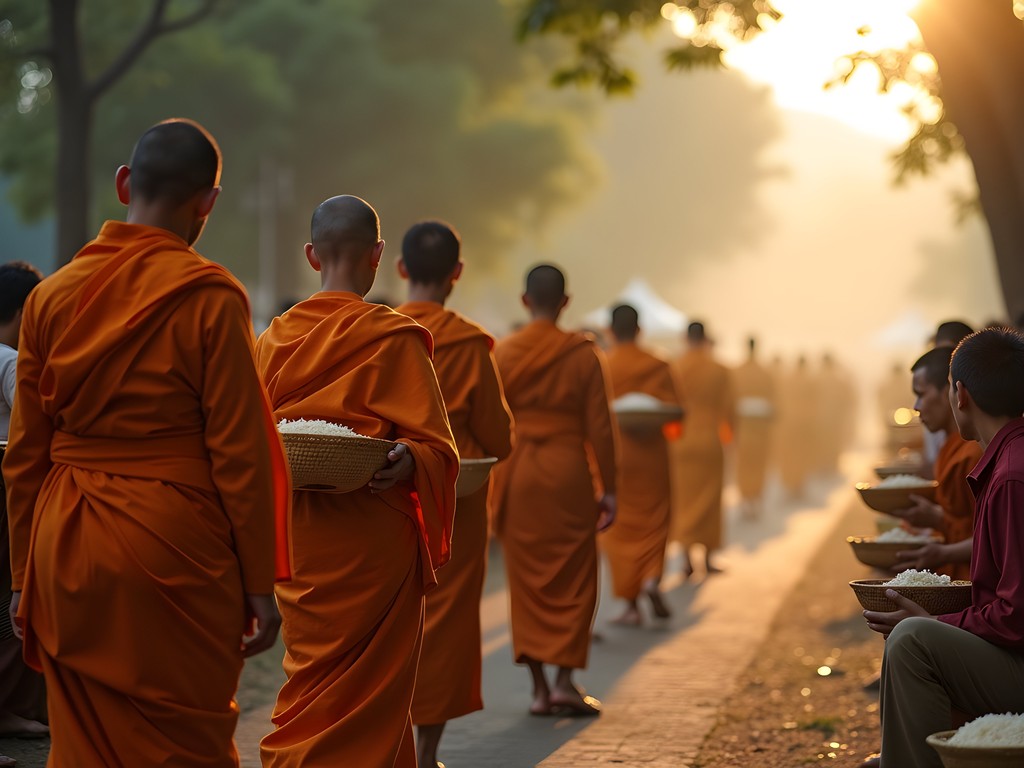
💡 Pro Tips
- For tak bat, dress modestly with shoulders and knees covered
- Observe the almsgiving ceremony from a respectful distance without flash photography
- Visit the morning market before 8am when it's most active and authentic
Temple Treasures and Colonial Charm
Luang Prabang houses over 30 active temples (wats), each with its own character and story. Rather than racing to see them all—an impossible and spiritually exhausting task—I chose to visit a select few, giving each the time it deserved.
Wat Xieng Thong, the city's most revered temple, became my morning sanctuary. Built in 1560, this temple exemplifies classic Luang Prabang architecture with its gracefully sweeping rooflines that nearly touch the ground. I arrived just after opening, before tour groups descended, and spent an hour sketching the intricate glass mosaics that adorn the rear wall of the main sanctuary—a tree of life populated with birds and animals in vibrant jewel tones.
The temples of Luang Prabang aren't static museums but living spiritual centers. At Wat Mai, I sat quietly in the shade as novice monks practiced English with visitors, their curiosity about the outside world as strong as my fascination with their lives of discipline and devotion. One young monk named Sith showed me his language notebook filled with carefully copied English phrases and drawings—a touching reminder of how universal the desire to connect across cultures truly is.
Between temple visits, I explored the town's French colonial heritage, which creates such a distinctive architectural dialogue with traditional Lao structures. The former Royal Palace (now the National Museum) perfectly embodies this fusion—a building commissioned by the French for the Lao royal family that incorporates elements from both cultures. Though photography is forbidden inside, the museum's collection of royal artifacts and religious treasures provides crucial context for understanding Laos' complex history.
As afternoon temperatures climbed, I followed the example of locals and retreated to the shade. The peninsula's many cafés housed in restored colonial buildings offer perfect respite. At L'Étranger Books and Tea, I discovered a sanctuary where weathered wooden floors and ceiling fans create an atmosphere straight from another era. I spent hours there with a pot of local tea, leafing through their collection of books on Lao history and culture while occasional rainshowers drummed against the shuttered windows.
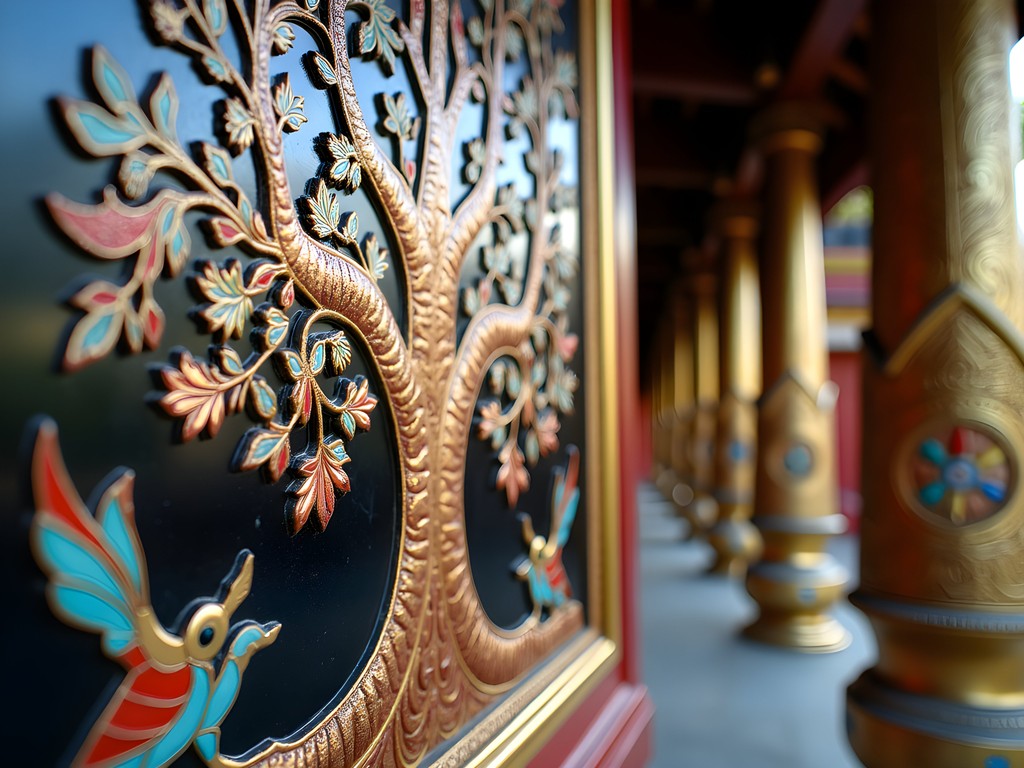
💡 Pro Tips
- Visit major temples early morning or late afternoon to avoid crowds and heat
- Dress appropriately for temples: covered shoulders and knees, shoes off before entering buildings
- The combined ticket for the Royal Palace Museum also includes access to Haw Pha Bang temple—worth the extra cost
Beyond the Peninsula: Waterfalls and Village Life
While Luang Prabang's peninsula contains enough beauty to fill a week, the surrounding countryside offers equally compelling experiences for the solo traveler. After three days exploring the town's architectural treasures, I was ready to venture beyond its borders.
Kuang Si Falls, located about 30km from town, tops most visitors' lists—and with good reason. Rather than joining a group tour, I negotiated with a tuk-tuk driver for a half-day excursion, arranging to depart early to beat both the crowds and midday heat. The bumpy ride through rural landscapes provided glimpses into village life—women pounding rice in wooden mortars, children herding water buffalo, farmers tending emerald fields.
The falls themselves exceeded my expectations. A series of cascading turquoise pools culminate in a 50-meter main waterfall that thunders through the jungle. I followed the path to the top, a moderately challenging 20-minute climb that rewards with spectacular views across the valley. My hiking sandals proved perfect for navigating the sometimes slippery terrain while allowing me to wade through the refreshing lower pools.
The site includes a moon bear rescue center where you can observe these endangered animals, rescued from bile farms, enjoying a peaceful retirement. It's a sobering but important reminder of the conservation challenges facing the region.
Another day, I joined a small-group boat trip up the Mekong to visit Pak Ou Caves. The journey itself became a highlight as our wooden longboat navigated the coffee-colored river past dramatic limestone karsts and tiny fishing villages. At Ban Xang Hai village, known for producing traditional rice whiskey (lao-lao), I watched an elderly woman weaving intricate patterns on a backstrap loom—a technique unchanged for centuries.
The Pak Ou Caves themselves house thousands of Buddha images, accumulated over hundreds of years as devotees leave these sacred objects when they can no longer care for them properly. The lower cave is easily accessible, while the upper cave requires climbing steep steps but rewards with dramatic views and fewer visitors.
On our return journey, we stopped at Ban Xieng Lek, a village specializing in traditional paper-making. The craftspeople demonstrated how they transform mulberry bark into delicate sa paper using techniques passed through generations. I couldn't resist purchasing several sheets of paper embedded with flower petals—perfect for sketching my architectural observations back home.
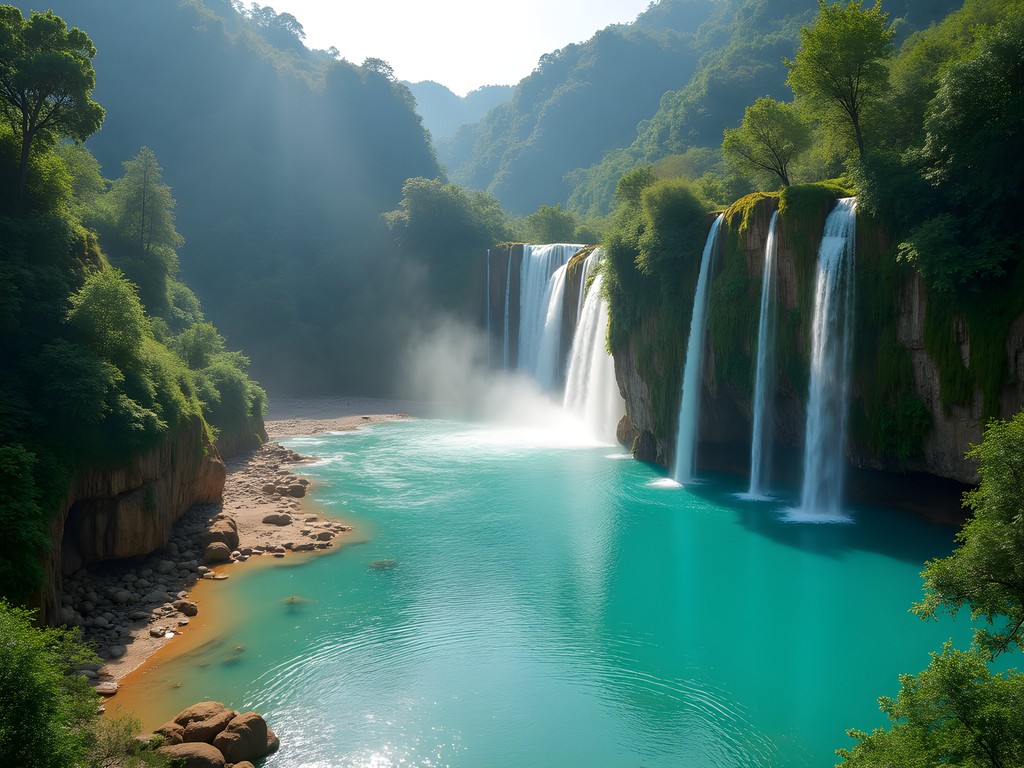
💡 Pro Tips
- Visit Kuang Si Falls early (before 10am) or late afternoon to avoid crowds
- Bring modest swimwear if you plan to swim in the falls' lower pools
- For boat trips, arrange through your guesthouse rather than the tourist offices on the main street for better prices
Sunset Rituals and Night Markets
In Luang Prabang, days begin and end with ritual. If morning belongs to the monks, evening belongs to Mount Phousi—the sacred hill rising 100 meters above the peninsula's center. Each day before sunset, travelers and locals alike make the pilgrimage up its 328 steps to witness the sun's descent over the Mekong.
I joined this procession my first evening, but quickly discovered the main viewpoint becomes overcrowded. On subsequent evenings, I found quieter spots along the ascent that offered equally spectacular views with space for contemplation. One evening, I simply brought my travel journal and spent an hour sketching the town's roofscape as the light transformed from gold to pink to deepening blue.
As darkness falls, Sisavangvong Road transforms into the Night Market—a kaleidoscope of color as vendors unfurl blankets displaying textiles, crafts, and artwork. Unlike many Southeast Asian markets, Luang Prabang's night market operates without aggressive hawking, creating a pleasantly relaxed atmosphere for browsing.
As someone passionate about vernacular design and craftsmanship, I found the textile offerings particularly compelling. The Hmong, Khmu, and Tai Lue ethnic groups each have distinctive weaving patterns and techniques, often incorporating indigo dyes and intricate embroidery. I spent hours conversing with weavers about their processes, learning to distinguish machine-made tourist pieces from authentic handcrafted works.
At a stall near the market's end, I met Mai, a Hmong woman whose family has created textiles for generations. She explained how each pattern tells a story—geometric designs representing mountains and rivers, stylized elephants symbolizing strength. I purchased a hand-embroidered wall hanging from her, its intricate stitches representing weeks of evening work after long days in the fields.
For dinner, the street food alley that branches off the main market offers delicious, inexpensive options. Communal seating at long tables makes this a natural place for solo travelers to connect with others. I developed a nightly ritual of selecting from the buffet-style offerings (25,000 kip—about $2.50—for a plate you can fill yourself) followed by fresh fruit smoothies from a vendor whose smile grew more familiar each evening.
After dinner, while many tourists retreat to bars along the Mekong, I often chose quieter pleasures—attending traditional dance performances at the Royal Ballet Theatre or joining the locals at free outdoor aerobics classes that spring up in public squares after the day's heat dissipates.

💡 Pro Tips
- Visit Mount Phousi for sunrise rather than sunset to avoid crowds while enjoying equally spectacular views
- When shopping at the Night Market, prices are generally fixed but gentle negotiation is acceptable for multiple purchases
- Look for the vegetarian buffet stands in the food alley—they're marked with yellow flags and offer the freshest options
Finding Your Rhythm: Slow Travel in a Sacred Space
By mid-week in Luang Prabang, I'd settled into a rhythm that felt both productive and peaceful—a rare combination for someone accustomed to cramming every possible sight into an itinerary. This town doesn't reward rushing; its treasures reveal themselves gradually to those willing to slow down and observe.
My mornings typically began with a meditation session at my guesthouse, followed by a simple breakfast of fresh fruit and sticky rice. I'd spend early hours exploring a new temple or neighborhood before the heat intensified, then retreat to a riverside café during midday to write, sketch, or simply watch the slow theater of river life unfold.
Luang Prabang proved ideal for the solo female traveler. I never once felt unsafe, even walking alone in the evenings. The town's small size, gentle pace, and lack of aggressive touts creates a remarkably pressure-free environment. When I did want company, the communal tables at cafés and cooking classes offered natural opportunities to connect with fellow travelers.
One afternoon, seeking deeper understanding of Lao culture, I joined a traditional cooking class at Tamarind Restaurant. In an open-air pavilion overlooking organic gardens, our small group learned to prepare jeow (spicy dipping sauces), mok pa (fish steamed in banana leaf), and laap (herb-filled meat salad). The techniques reflected the resourcefulness I'd observed throughout Laos—nothing wasted, flavors balanced, ingredients used in their entirety.
"Our cooking is about harmony," explained our instructor, Noi. "Sweet, sour, salt, and herbs must dance together, just as people must live in harmony with the river and mountains."
This philosophy of balance extends beyond cuisine to the town's approach to tourism. Unlike other Southeast Asian destinations that have surrendered entirely to visitor demands, Luang Prabang maintains its soul. Regulations limit building heights, preserve traditional architecture, and protect cultural practices from becoming mere performances.
On my final day, I rented a bicycle to explore the peninsula's quieter eastern side. Pedaling down narrow lanes where chickens scratched in gardens and children practiced English greetings, I discovered a small bamboo bridge crossing the Nam Khan River. For 5,000 kip (about 50 cents), I crossed this seasonal structure (rebuilt annually after each rainy season) to reach a cluster of villages where tourism feels distinctly secondary to everyday life.
At a simple riverside café, I sipped cold Beer Lao while watching women wash clothes in the river and fishermen check their nets—scenes unchanged for generations despite the UNESCO designation and growing tourism just across the water.

💡 Pro Tips
- Rent bicycles from your guesthouse (usually $2-3/day) for exploring at your own pace
- Book cooking classes at least a day in advance as they often fill up
- The bamboo bridge is only available during dry season (November-May); during rainy season, use the permanent concrete bridge
Final Thoughts
As my tuk-tuk wound its way back to the airport, I found myself already planning a return to Luang Prabang. In just one week, this town had worked its gentle magic on me, offering exactly what the solo traveler seeks: beauty without pretension, culture without commodification, and peace without isolation. What makes Luang Prabang extraordinary isn't any single temple or waterfall, but rather the harmonious whole—a place where architecture, nature, and living traditions exist in remarkable balance.
For designers and travelers alike, Luang Prabang offers profound lessons in sustainability, preservation, and the power of respecting indigenous wisdom. Its UNESCO protection isn't just preserving buildings but safeguarding a way of life that values connection, craftsmanship, and contemplation. In our rapidly modernizing world, such places become ever more precious.
If your soul needs recalibration, if your creative well needs replenishing, or if you simply seek adventure without chaos, consider a solo journey to this Mekong jewel. Just promise me you'll give yourself time to move at the town's pace—slow, intentional, and in harmony with the rivers that have shaped it for centuries.
✨ Key Takeaways
- Luang Prabang rewards slow travel—plan fewer activities and allow time for spontaneous discoveries
- The town offers an ideal balance of cultural immersion and comfort for solo female travelers
- Beyond the main attractions, the surrounding villages provide authentic glimpses into traditional Lao life
📋 Practical Information
Best Time to Visit
November to February (cool, dry season)
Budget Estimate
$30-50 per day including accommodation, food, and activities
Recommended Duration
5-7 days minimum
Difficulty Level
Moderate (Some Walking On Uneven Surfaces, Temple Stairs)
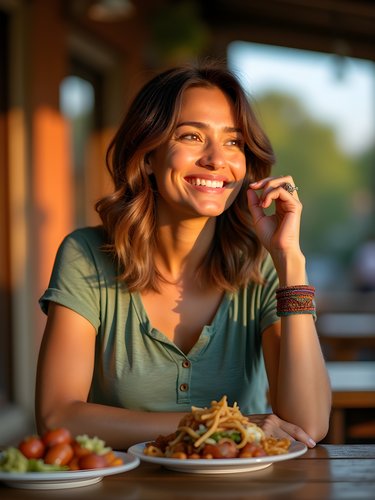

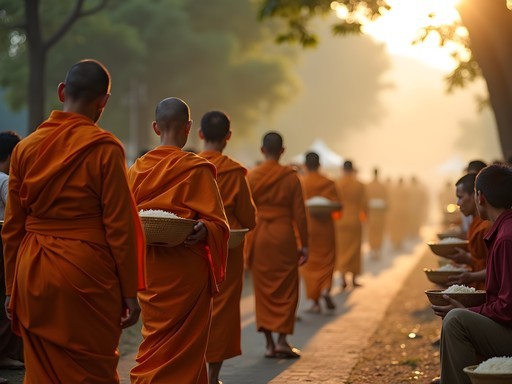
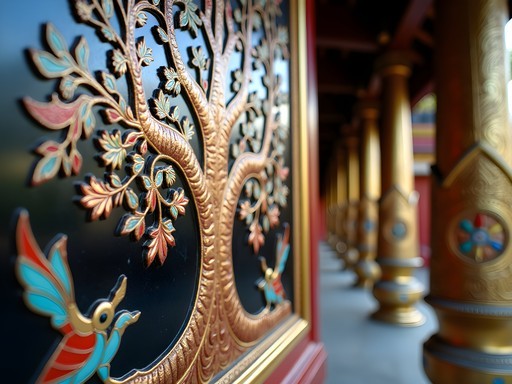
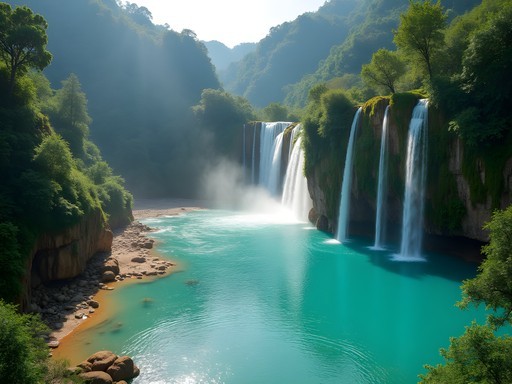
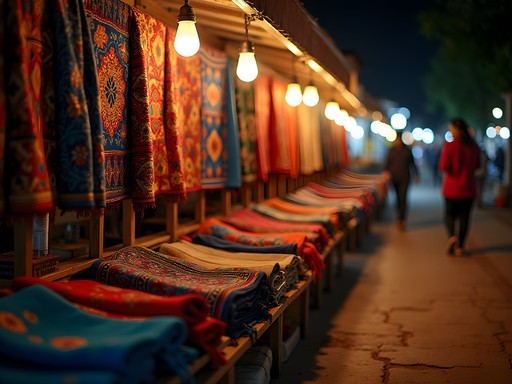
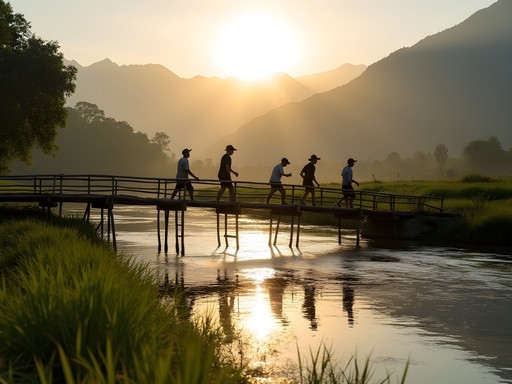


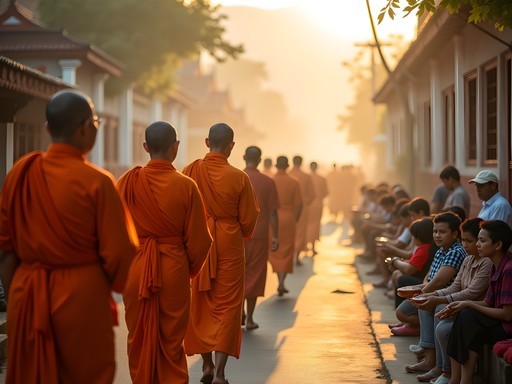
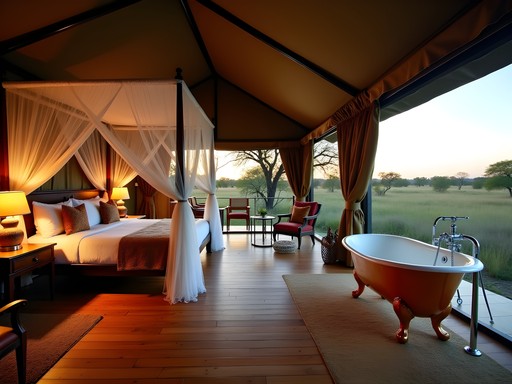
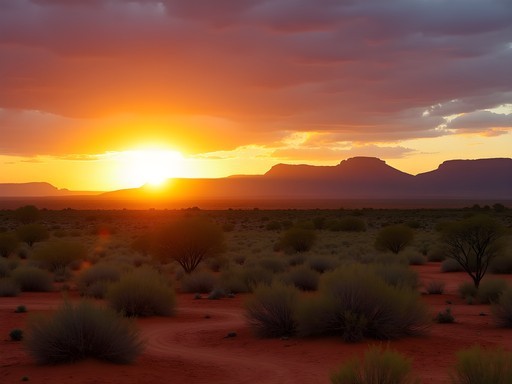



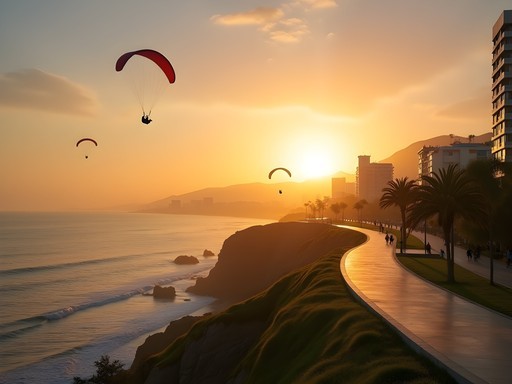

Comments
oceanfan
How many days would you recommend for Luang Prabang? Is a week too long? I'm thinking of combining it with Vientiane but not sure how to split my time.
Frank Garcia
A week in Luang Prabang is perfect! I found Vientiane less engaging - maybe 2-3 days there max. Luang Prabang has more charm and activities nearby (waterfalls, Pak Ou caves, village visits). The slower pace is what makes it special.
oceanfan
Thanks for the advice! Will definitely plan for more time in Luang Prabang then.
AsianFoodieQueen
I visited Luang Prabang solo last year and absolutely fell in love with it. One thing I'd add to this excellent guide is to try a Laotian cooking class! I took one at Tamarind and it was a highlight of my trip. We visited the morning market to select ingredients, then cooked traditional dishes like mok pa (herbed fish in banana leaf) and jeow (dipping sauces). Also, don't miss the coconut pancakes from the night market - I'm still dreaming about them!
backpack_therapist
Pro tip for anyone visiting: bring US dollars in small denominations. While kip is used everywhere, some guesthouses and higher-end restaurants prefer USD for payment. And don't miss the bamboo bridge during dry season - it's rebuilt every year!
first_time_asia
Is it easy to find ATMs there? Planning my first trip to Laos and nervous about carrying too much cash.
backpack_therapist
There are several ATMs in the main town area, but they sometimes run out of cash or have connectivity issues. I'd recommend withdrawing enough for a few days when you arrive. The BCEL bank ATMs were most reliable for me.
LaosLover2023
Just got back from Luang Prabang last month and your post captures the vibe perfectly! The almsgiving ceremony was truly humbling.
smartphotographer
I'm planning a photography trip there next month. Any tips on the best spots for capturing local life beyond the typical temple shots? Also, how did you approach photographing the monks during almsgiving without being disrespectful?
Olivia Sanchez
For authentic local life, head to the small morning market near Wat Mai (not the tourist night market). Also, the boat crossing points on the Mekong offer great candid moments. For almsgiving, I stayed at least 10 meters back, used a zoom lens, never used flash, and dressed modestly with shoulders covered. I also made a small donation rather than just taking photos. The key is observation first, photography second.
SunsetChaser
Your sunrise photos from Mount Phousi are stunning! What time did you have to climb up to get that perfect light?
Taylor Moreau
Excellent guide, Olivia! Your description of the morning mist over the Mekong took me right back. I'd add that visitors should consider staying at one of the small guesthouses on the peninsula rather than the larger hotels - the experience is much more authentic. I stayed at Mekong Riverview and waking up to those river views was incredible. Also worth noting that the night market is perfect for solo travelers - very relaxed atmosphere for dining alone at the food stalls. I found my pocket phrasebook incredibly useful for basic interactions, especially in the smaller villages outside town.
wanderingspirit92
How did you get from the waterfalls back to town? I've heard taxis can be hard to find.
Taylor Moreau
Good question! I arranged a round-trip with a tuk-tuk driver through my guesthouse. We agreed on a time for pickup, which gave me about 3 hours at Kuang Si. Most accommodations can arrange this service, and it's fairly standard practice. Alternatively, many travelers join the shared songthaews (pickup trucks) from the main street for a more budget option.
adventuremaster
This looks amazing! I'm planning a solo trip to SEA next year and wondering if 3 days in Luang Prabang is enough? Also, did you feel safe as a solo female traveler?
Taylor Moreau
I spent 5 days there last year and found it to be one of the safest places I've visited in Southeast Asia. Very relaxed atmosphere with minimal hassle. I'd recommend 4 days minimum to really appreciate the temples, waterfalls, and have time for a cooking class. The almsgiving ceremony alone is worth an extra day!
adventuremaster
Thanks so much! Will definitely plan for 4-5 days then. Did you do the almsgiving ceremony? I've heard mixed things about tourist participation.
Taylor Moreau
I observed rather than participated. There are unfortunately some tour operators who don't explain the proper etiquette. If you want to participate, arrange it through your accommodation who can ensure it's done respectfully. Otherwise, simply watching from a distance is a wonderful experience.
Jean Wells
As someone who's visited Luang Prabang annually for the past decade, I appreciated your respectful approach to almsgiving. Too often I see tourists treating it as a photo op rather than a sacred ritual. One recommendation for solo travelers: stay at a guesthouse rather than a hotel. The family-run establishments offer invaluable local knowledge and often include breakfast where you can meet other travelers. My favorite is Manichan Guesthouse near the night market - the owner Kham can arrange authentic experiences like cooking classes in local homes rather than tourist-centered ones. Also, bring a good headlamp for those early morning walks to almsgiving - the streets are quite dark before dawn. I use my headlamp which is compact but powerful enough for those pre-dawn walks.
photorider
Been there twice. Don't miss the bamboo bridge during dry season. Great local experience on the other side!
Venture X
Premium card with 2X miles, $300 travel credit, Priority Pass